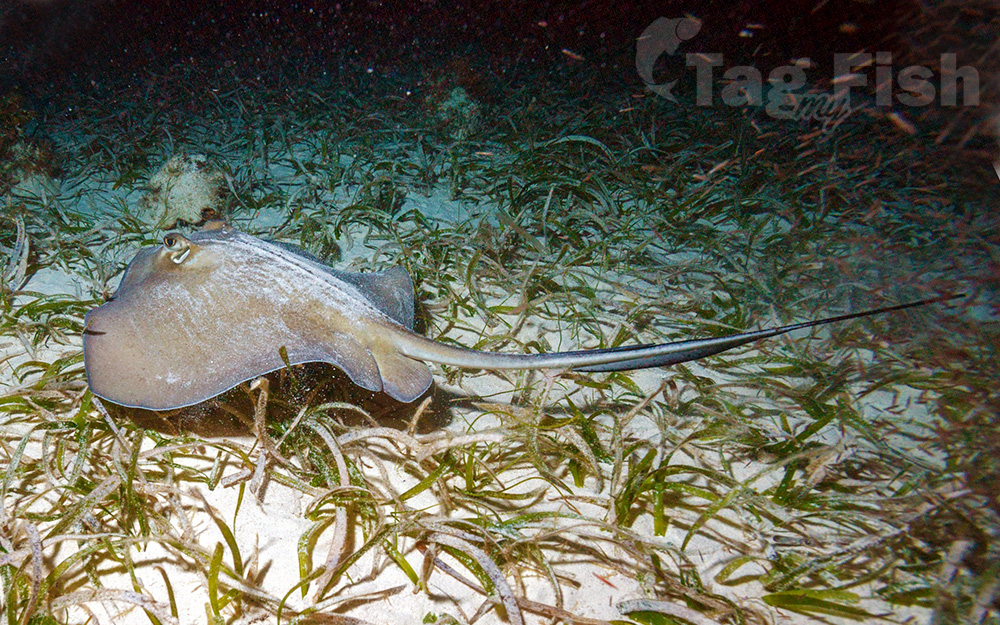Common stingray
(Dasyatis pastinaca)

Classification
General data
The common stingray (Dasyatis pastinaca) is a species of stingray in the family Dasyatidae, found in the northeastern Atlantic Ocean and the Mediterranean and Black Seas. It typically inhabits sandy or muddy habitats in coastal waters shallower than 60 m (200 ft), often burying itself in sediment. Usually measuring 45 cm (18 in) across, the common stingray has a diamond-shaped pectoral fin disc slightly wider than long, and a whip-like tail with upper and lower fin folds. It can be identified by its plain coloration and mostly smooth skin, except for a row of tubercles along the midline of the back in the largest individuals.
Distribution and habitat
The common stingray is found throughout the Mediterranean and Black Seas. It also occurs, though in significantly lower numbers, in the northeastern Atlantic Ocean from southern Norway and the western Baltic Sea to Madeira and the Canary Islands. This bottom-dwelling species can be found from the shore to a depth of 200 m (660 ft), though it is not usually found deeper than 60 m (200 ft). It favors sandy or muddy bottoms in calm water, and is also sometimes encountered near rocky reefs or in estuaries, as it is tolerant of low salinity. Off the Azores, common stingrays are most abundant in summer and least abundant in winter, suggestive of a seasonal shift in range and/or depth as has been documented in other ray species.
Description
The common stingray has been reported to reach a width of 1.4 m (4.6 ft) and a length of 2.5 m (8.2 ft), though a width of 45 cm (18 in) is more typical. The flattened pectoral fin disc is diamond-shaped and slightly wider than it is long, with narrowly rounded outer corners. The leading margins of the disc are almost straight and converge on a pointed, slightly protruding snout; the trailing margins of the disc are convex. The eyes are smaller than the spiracles (paired respiratory openings), which are placed closely behind. There are 28–38 upper tooth rows and 28–43 lower tooth rows; the teeth are small and blunt, and arranged into flattened surfaces. There are five papillae (nipple-like structures) across the floor of the mouth.
The tail is slender and whip-like, measuring approximately half as long as the disc. A stinging spine with strong serrations, measuring up to 35 cm (14 in) long and equipped with a venom gland at its base, is positioned about a third of the distance along the tail. A second or even third spine may also be present, as the spines are regularly replaced and new spines grow in before existing ones have been shed. The tail behind the spine bears a low cutaneous fold on top and a short, deep fold underneath. The body and tail are smooth, save for a few dermal denticles on the leading edge of the disk; older individuals may also develop a row of bony knobs along the midline of the back. This species is a solid gray, brown, reddish, or olive-green above, and whitish below with dark fin margins. Young rays may have white spots.
The largest recorded common stingray specimen was found in 2016 in the Izmir province of Turkey in the course of a study on trolling. Its fins had a width of 2.21 metres (7.3 ft), although its length could not be determined as the tail had been removed earlier.











